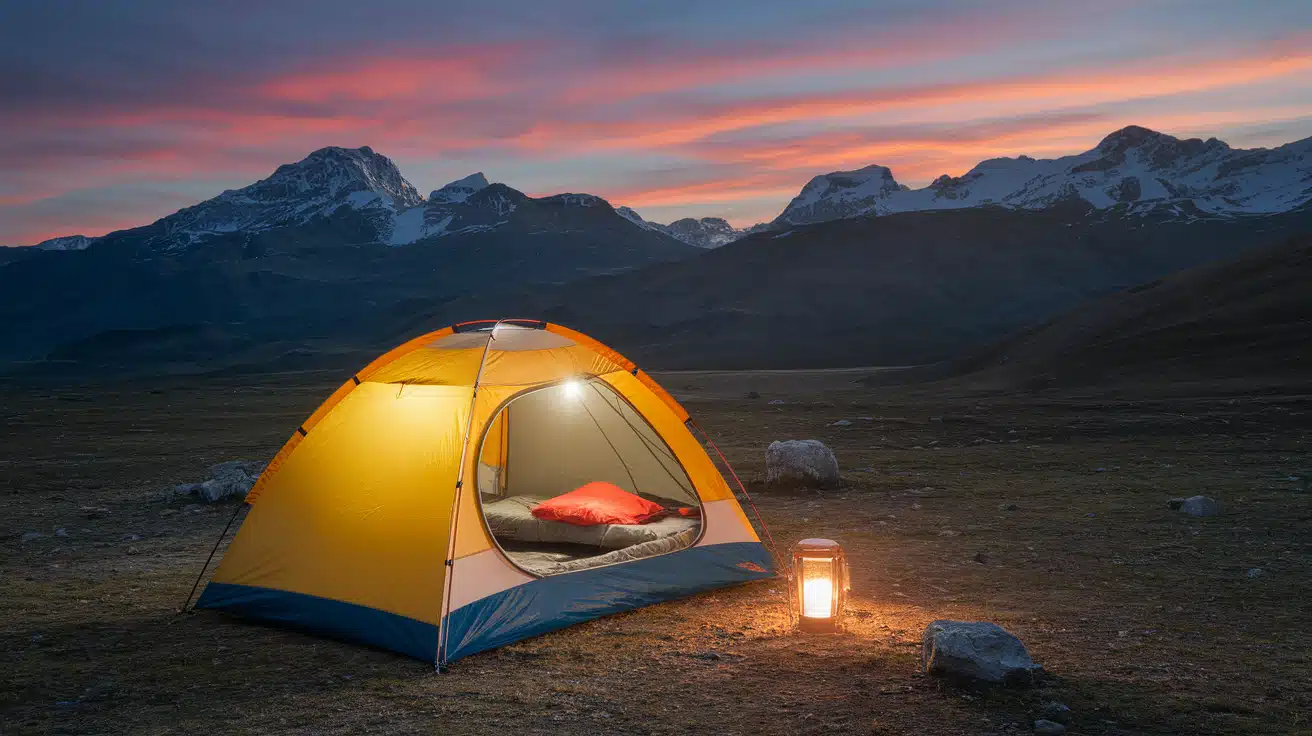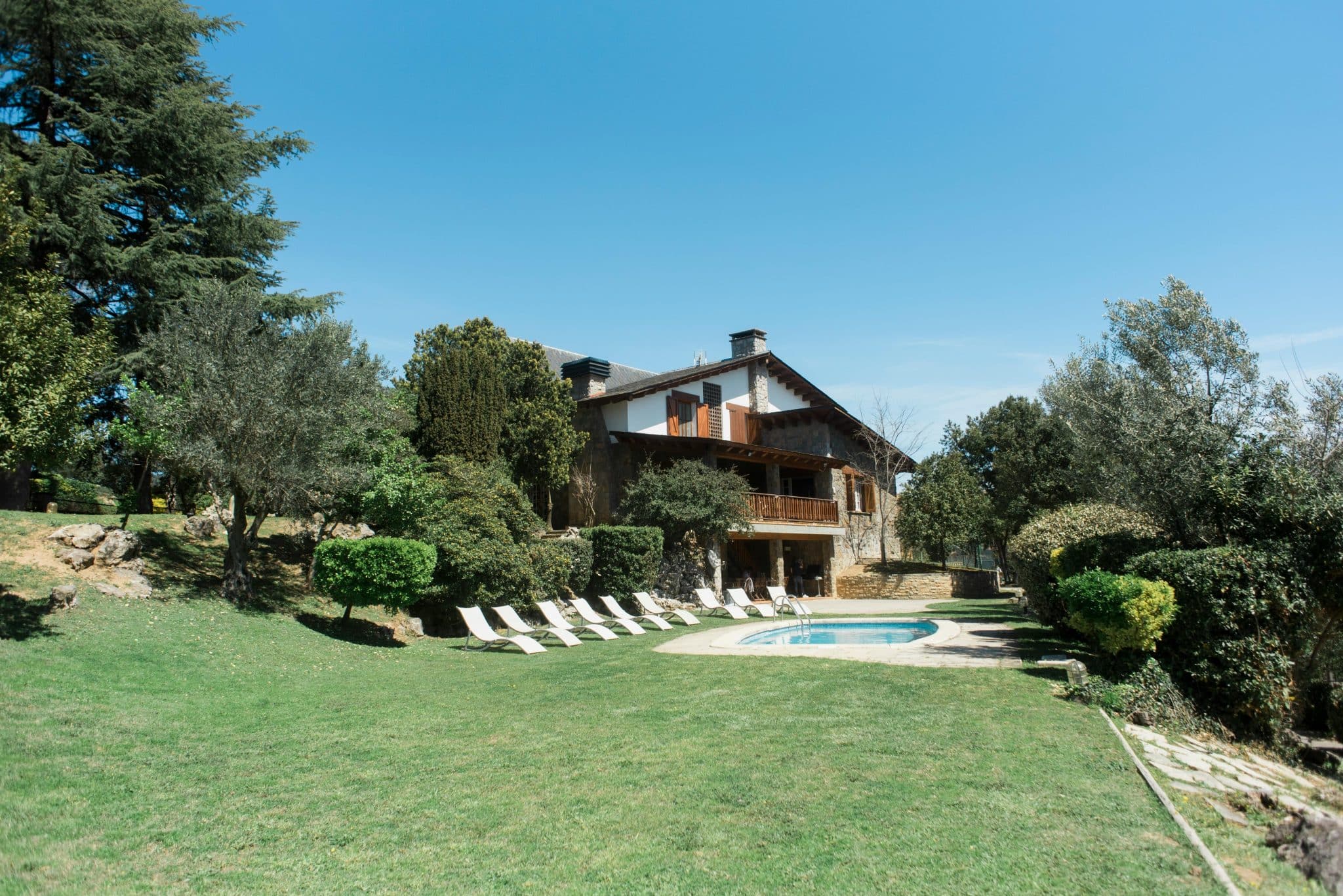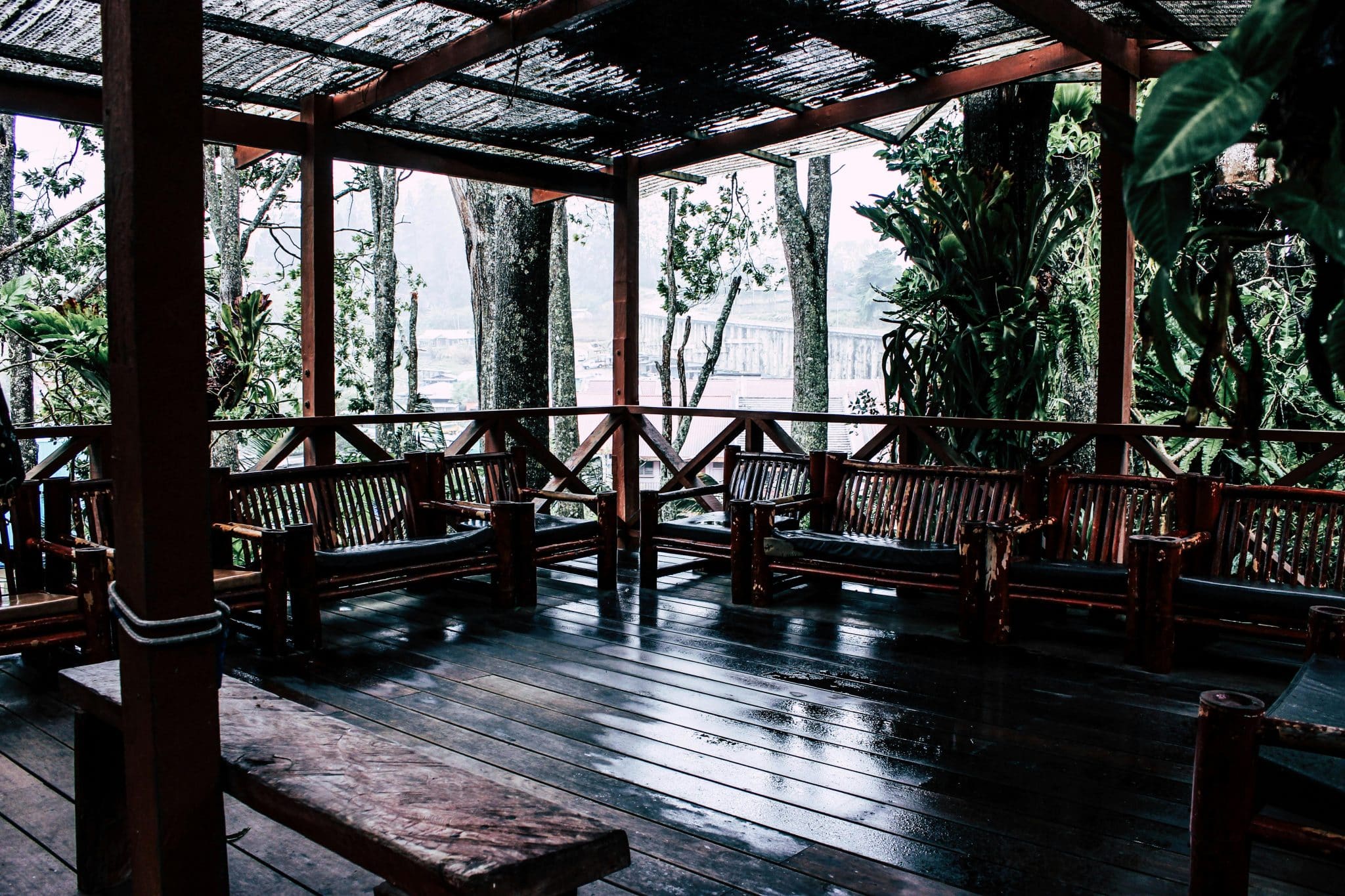Camping in cold weather can be miserable when you’re shivering all night in your tent. I’ve spent countless hours feeling the chill creep through my sleeping bag when the temperature drops after sunset.
Without electricity, keeping warm becomes even more challenging as traditional heating options aren’t available.
I can help you transform those cold, uncomfortable nights into cozy camping experiences.
In this guide, I’ll share proven methods for staying warm in your tent without electricity, from choosing the right sleeping bag and pad to using hot water bottles, proper layering techniques, and strategic campsite selection.
You’ll discover how your body generates heat, how to prevent heat loss, and simple tricks seasoned campers use to stay comfortable even in freezing temperatures.
Let’s turn your next cold-weather camping trip into a cozy outdoor adventure.
How to Stay Warm in a Tent Without Electricity?
Finding yourself shivering in a tent during a cold night can quickly turn an exciting outdoor adventure into a miserable experience.
Choosing the right tent makes a huge difference in how warm you’ll stay. A four-season tent provides better protection against cold temperatures, and smaller tents require less body heat to keep warm inside.
Your sleeping bag is your primary defense against the cold, so invest in one rated for temperatures lower than you expect to encounter and consider adding a liner for extra insulation.
Remember proper clothing layering, which starts with moisture-wicking materials against your skin, followed by warm insulating layers like fleece or wool, and finished with a windproof outer layer if needed.
These fundamental elements create the foundation for staying warm in your tent without electricity and will help ensure you sleep comfortably even when temperatures drop unexpectedly.
The Basics of Staying Warm in Your Tent
Finding the right tent for cold-weather camping is your first step toward staying cozy on chilly nights.
Look for a tent built specifically for lower temperatures. It should have sturdy poles that can handle wind or snow loads, minimal mesh panels, and a full-coverage rainfly that extends to the ground. Four-season tents cost more but provide much better protection when temperatures drop.
Once you have your tent, choosing the right spot to pitch it makes a huge difference in your comfort. Set up in areas sheltered from wind by trees, rocks, or hillsides, and avoid camping in low spots where cold air settles overnight.
A good location can feel 5-10 degrees warmer than an exposed or low-lying area, making your other warming strategies more effective.
7 Power-Free Warmth Hacks to Stay Warm
1. Hot Water Bottle
Fill a sturdy water bottle, like a Nalgene, with hot water right before bed. Tuck it into your sleeping bag near your core area, not your feet. This creates a personal heater that radiates warmth for hours.
The heat slowly releases throughout the night, keeping you toasty without any power needed. For safety, make sure the bottle is sealed tightly and wrapped in a thin cloth if it feels too hot against your skin.
2. Hand Warmers
Small chemical hand warmers activate when exposed to air and provide heat for up to 10 hours. For maximum effect, place them near major blood vessels like your wrists, neck, or armpits.
You can also put them at the bottom of your sleeping bag to warm your feet. Some are reusable and can be boiled to reset them for multiple uses during your trip.
3. Heat Rocks
Carefully select medium-sized, non-porous rocks from your campsite. Place them near your campfire for about an hour until thoroughly heated. Wrap the warm stones in towels or cloth and position them inside your tent, away from your sleeping bag and tent material.
They’ll radiate heat for several hours, warming the tent’s air naturally.
4. Thermal Mats or Blankets
Place thick insulating materials between you and the cold ground. Foam sleeping pads, wool blankets, or dedicated thermal mats create a barrier that stops the earth from pulling heat from your body.
The higher the R-value of your sleeping pad, the better insulation it provides. Consider layering multiple mats for extreme cold.
5. Tarp or Footprint Under Your Tent
Before setting up, lay a waterproof tarp or tent footprint beneath your tent. This extra layer blocks ground moisture and provides additional insulation from the cold earth.
Make sure it doesn’t extend beyond your tent’s edges to prevent collecting rainwater. Some campers use multiple layers for extra protection in very cold conditions.
6. Drape a Rainfly Over Your Tent
Secure your rainfly tightly over your tent, making sure it’s properly tensioned. This outer layer blocks wind and creates a small air pocket that serves as additional insulation.
In winter conditions, brush off any snow accumulation regularly, as snow adds weight. The rainfly also keeps your tent dry, which is crucial for maintaining warmth.
7. Cuddle for Body Heat
Share a sleeping area with your camping partner to combine body heat. Two people generate twice the warmth in a confined space. Consider using a double sleeping bag designed for couples or zip-compatible single bags together.
Even placing sleeping bags close together helps create a warmer microclimate inside your tent without any external heat source.
Additional Tips for Cold Weather Comfort
1. Keep Your Tent Properly Ventilated
Open small vents near the top of your tent, even during cold nights. This allows moisture from your breath and body to escape rather than condense on the tent walls and drip back onto you.
Proper airflow prevents that clammy, damp feeling that makes cold temperatures feel worse. If your tent has adjustable vents, keep them partially open at night and fully open during the day when temperatures are warmer.
2. Utilize Hand Warmers
For maximum effectiveness, activate chemical hand warmers about 15 minutes before you need them. Store them in inner pockets close to your body where major blood vessels run.
For cold feet, place them on top of your socks, not inside, where they might cause burns. Some campers bring rechargeable electric hand warmers for multiple uses, though these need to be charged beforehand.
3. Eat High-Calorie Foods & Drink Warm Beverages
Before bed, consume a filling dinner with plenty of fats and proteins to fuel your body’s heat production. Hot drinks like tea, cocoa, or soup warm you from the inside out and help maintain hydration.
Pack calorie-dense snacks like nuts, chocolate, and dried fruits to eat if you wake up cold during the night. Your body burns calories to stay warm, so keeping your energy stores full is essential.
Considerations for Best Use Cost and Weather Performance
| Category | Details |
|---|---|
| Best For | Winter camping and those who enjoy off-grid experiences. |
| Estimated Cost | Invest in high-quality gear (e.g., sleeping bags and insulated mats), which can cost from $50 to $300, depending on the product. |
| Weather Resistance | This approach works best in temperatures above freezing but can be effective down to 20°F (-6°C) with the right gear. |
Final Thoughts
Cold nights in a tent don’t have to end with chattering teeth and sleepless hours. With these methods, you can create a warm sleeping space even without electrical heating options.
Remember that staying warm is about layers—layers in your clothing, your sleeping setup, and your tent insulation. Start with a good foundation of proper gear, then add these techniques as needed depending on the temperature.
If you’re planning a cold-weather camping trip, practice these methods before you really need them. Each person’s body responds differently to cold, so find the combination that works best for you.
Now it’s your turn—what’s your favorite method for staying warm in a tent? Leave a comment below sharing your best cold-weather camping tip!
Frequently Asked Questions
What Temperature Is Too Cold for Tent Camping?
Most people find camping uncomfortable below 30°F without proper gear, though experienced campers can handle lower temperatures with the right equipment.
How Can I Stay Warm Without a Sleeping Bag?
Layer several blankets, use emergency thermal blankets, wear all your clean clothes in layers, and place insulating materials between you and the ground.
Is It Safe to Heat Rocks for My Tent?
Yes, if you choose non-porous rocks, heat them gradually, wrap them in cloth, and keep them away from flammable materials and your sleeping bag.
Will a Smaller Tent Keep Me Warmer than a Larger One?
Yes, smaller tents warm up faster and retain heat better because there’s less air space for your body heat to warm.















